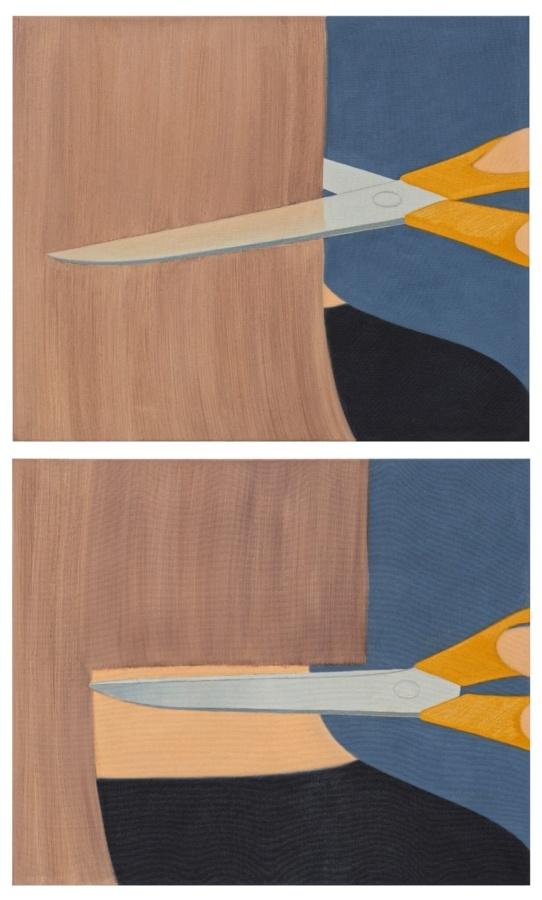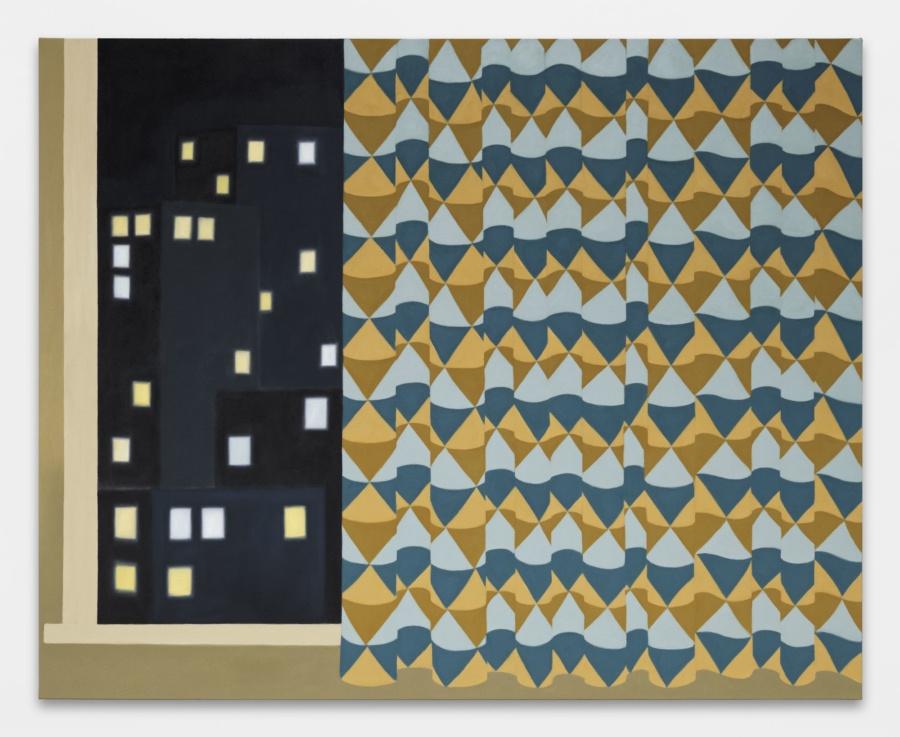September 30, 2020
Download as PDF
View on The New York Times
Henni Alftan’s distinctive artistic vision; Sonja Ferlov Mancoba and Ernest Mancoba’s pairings; and Matthew Porter’s pandemic-tinged photographs.

Haircut (Déjà-vu), 2020, oil on canvas; 2 parts. each: 23 5⁄8 × 28 3⁄4 inches; 60 × 73 cm
Through Nov. 1, Karma, 172 & 188 East Second Street, Manhattan; 212-390-8290, karmakarma.org.
Because the paintings of the Finnish-born, Paris-based painter Henni Alftan stood out in Karma’s “(Nothing but) Flowers” exhibition last month, I expected a bit more bang from her solo debut in New York. For one thing, her palette here is a little too subdued. Still, the show introduces a painter with a distinctive artistic vision, even if its power is more forceful in the hefty book that accompanies the show.
And the paintings do bang, but slowly. Their spare compositions emphasize silence and stillness, the artificiality of painting, the magnification of everyday detail and the division of reality into nearly abstract areas of color and texture. The images come at you in stages, sometimes by requiring a second look. In the diptych “Haircut (Déjà-vu),” from this year, one panel shows a hand with scissors, poised to cut through a plane of long strawberry blond hair; its color is reflected in the scissors’ top blade. In the second panel, the deed is done; no reflection now. Just the closed scissors, the shorn hair and the bottom edge of the painting, all exquisitely and a little too strictly parallel.

The Curtain, 2020, oil on canvas, 51 ¼ × 63 ¾ inches; 130 × 162 cm
In other works, the eye must hold two thoughts at once: The subject of “The Curtain” is half drawn across a dark nighttime window; its cheerful geometric pattern is distorted by its lavish undulations. The view outside is dark, recessive; the lighted windows of apartments beyond muster a sparser pattern. These paintings can be subtly confusing. Examples include the dagger of light that cuts through the becalmed geometry of the living room of “Morning Sun,” or, in “Self-Portrait,” where a vaguely male hand that holds up a pocket mirror in which is reflected a richly made-up female eye.
Ms. Alftan’s precedents include Alex Katz, Domenico Gnoli and William Bailey, but her work’s absorbing deliberation and atmosphere make it debt-free.



